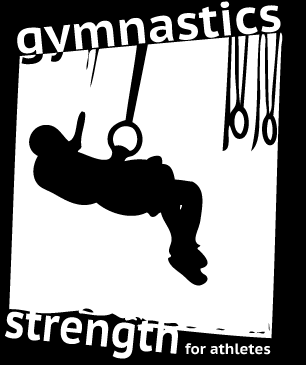Things A Gymnast Takes For Granted That Should Be Incorporated Into Your Box
Posted by Keith Pettit on
I have done 30 box visits and clinics and worked with hundreds of cross fit athletes. After working with beginner athletes as well as regularly working with Games and regional athletes, these are some things I think should be taken from the gymnastics world into your box.
1. Preventative maintenance is the key
Male gymnasts are fanatical about doing their exercise band therapy for their shoulders. Often the first thing they will do is pull a resistant band out of their bag and do their rotator cuff exercises and general stretches. Gymnasts and lifters put their shoulders in less than ideal positions and if the supporting muscles aren’t strong, they will get hurt.
If you hurt your rotator cuff or labrum, you will be off your lifting program for a long time and be forced to do these exercises for therapy. Do them when you are healthy so you don’t get hurt and have to take time off. Here is one example of the type of exercises you should be done with your resistance band.
Look at the bottom of this blog for a way to get a free mini-tutorial on shoulders and how to get 25% on all my tutorials.
2. Returning to Basics is Important
Even though they have more difficult skills, a lot of the time is spent on fixing their basics. You can walk into a gym and be amazed at a gymnast doing a double double (two flips and two twists) on floor. Then when you watch his practice you will be even more amazed to see him spend more time perfecting his round off than on his double double.
|
This especially pertains to your handstand and handstand walking. No matter who I coach - elite gymnasts or games athletes –I make them spend time doing belly to wall handstands to improve their shape. Get your hands as close to the wall as possible, shoulder width apart. Push up through the shoulders so they are next to your ears. Pull in your ribs and make your lower back straight. Push as tall as you can all the way through your toes! Hold this for only for a few seconds with the proper shape, then work your way up to one minute. Shape is more important than time upside down. As it gets easier, ease yourself off the wall maintaining the shape as you momentarily hold the handstand. If balancing is difficult, go back to the wall. This will improve your handstand walking, handstand push- ups and strengthen your core! |
 |
3. Breaking skills down make them easier to learn and less scary.
Very rarely will a gymnast just try a skill without doing multiple drills. Gymnastic coaches are very good at getting drills that mimic an aspect of the skill the gymnast is learning. These drills could be done hundreds of times. While no drill is exactly like the skill, they help the gymnast learn the action of it so the gymnast is ready when its time.
Take for instance the kipping drill done on the floor\. It works the turnover on the kipping muscle up. Lay on your back and bring your legs up toward your chest. Slightly round your back so your hips are off the ground. Then drive your feet down opening up in the hips. You should then finish with your feet on the ground and your hips up. Be as violent as possible on this open.
Move this to the low rings. Have the rings low enough that your arms are straight, but your shoulders are on the ground when you lay on your back. Again bring your knees up and then drive your feet down. Then sit up and catch yourself in a support. Make sure you catch with the rings close to your side.
4. Spotting is important in learning
Often when a gymnast is learning a skill, the coach will help them through it many times before the gymnast learns it alone. The coach may be there for confidence, to provide a cue of when to do something, or just to help the gymnast feel what position they should maintain. This can be used with a variety of skills including handstand walking, handstand pushups or muscle ups.
I do not believe in spotting someone through a skill they aren’t physically ready to do. I do believe spotting is an underutilized tool in the adult gymnastics strength community.
If the athlete is strong enough and ready for a muscle up, they can get a spot to help them figure out the action. I find it beneficial to have an athlete string together sets of 5-10 with a spot to build up strength and to reinforce the skill. I always believe it is better to do the skill correctly with a spot than to reinforce bad habits by just throwing your body without a spot.
5. It takes time
A typical gymnast works out 15-20 hours a week. The majority of the time is sheer repetition. Before that gymnast performs a skill in a competition they have practiced it hundreds of times.
You can’t expect to be able to do efficient muscle ups or handstand pushups in a short time. You must practice these a few times a week. You have to put the work in. As you spend more time on your hands, you will get more confident, stronger and make huge improvements!
Want 15% of any order - use the discount code 16.3
For more videos, drills and exercises check out my tutorials or follow me at coachkeithpettit on instagram. For a free mini-tutorial on shoulder exercises, register on the main page!
Share this post
- 0 comment
- Tags: crossfit, fitness, gymnastics, gymnasty, handstand pushups, muscle up, yoga
0 comment
